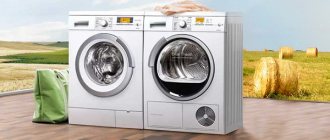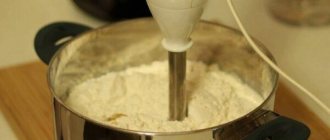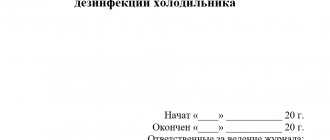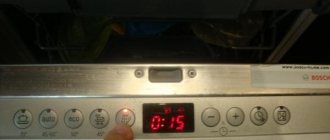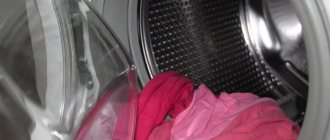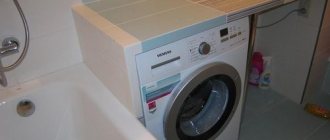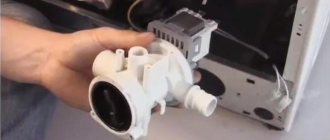Parameter “suction power of the vacuum cleaner”
The suction power of a vacuum cleaner is one of the most important parameters. This is an air flow that captures and draws debris, dust or dirt into the pipe due to the difference in pressure inside the model and outside. The vacuum is created by the motor.
To amaze potential customers, developers of various products demonstrate the high suction power of their models. Some of them use a float, which should rise as much as possible inside the marked pipe. Others expose spectators to tennis balls that are drawn in like feathers. The experiment proves the high speed of air movement required to move dirt from the surface to the filters. Still others organize the “Who will pull who” attraction, which serves as an illustration of the strength of the model.
How is suction power measured and affected?
When talking about the suction power of a vacuum cleaner, you should clarify how it is measured. Information is given in watts or aerodynamic watts. These are almost equal in size units of measurement. In order not to confuse buyers, manufacturers indicate the suction power of a vacuum cleaner in aerowatts, and the energy consumed in watts. Indicators are prescribed in instructions, certificates or other attached documents. Information about the figures of interest is provided by the official websites of brands and brands.
The efficiency of the equipment is assessed by the suction power. The higher this indicator, the cleaner the house will be. Large air volume and high flow rate are the key to good cleaning.
How does suction power differ from the power consumption of a vacuum cleaner?
It is necessary to distinguish between the power of the electric motor of the vacuum cleaner, which is consumed during operation, and the suction power.
The latter determines the quality of cleaning, how quickly and strongly the garbage is pulled inside. Power consumption means current consumption, energy per hour. It is often indicated on the body of the model in thousands of watts. Note !
The more power the vacuum cleaner consumes, the more you will have to pay for electricity. There is no direct connection between the power of the vacuum cleaner engine and the “draft” of air, since it is also influenced by other factors.
Calculation of electricity consumption
The energy consumption of a vacuum cleaner depends on its power characteristics. This information is reflected in the product passport. Products are produced with power from 0.65 to 2 kW. For washing varieties of this equipment, these parameters are even higher. Power indicates how many kW of energy resources are consumed in one hour.
An example of calculating the amount of electrical energy consumed by the specified product of the popular LG brand with a power rating of 2 kW (2000W):
- in 1 hour it is consumed – 2 kWh;
- when performing one cleaning daily, in which the unit is used for half an hour, 1 kWh will be consumed;
- Over the course of a month, daily cleaning will consume 30 kWh.
We recommend: How much electricity do chargers consume?
Considering the average cost of one kilowatt-hour of electricity in the amount of 3 rubles, the use of this equipment will cost the consumer 3*30=90 rubles.
Please note that we took a daily 30-minute cleaning, if you clean 4 times a month, then you will pay 12 rubles for the consumption of the vacuum cleaner.
The amount calculated in this way may vary in one direction or another, depending on the power characteristics of the equipment and the volume of work.
What determines the “power” characteristics of a vacuum cleaner?
Suction power can be maximum and medium effective. The difference between them is easy to understand.
The maximum parameter declared by the manufacturer is observed in the first seconds of operation of the vacuum cleaner, at the moment after turning on the device under conditions close to experimental ones. Then it decreases, and therefore it makes no sense to take into account the suction level immediately after startup.
The average useful power of the vacuum cleaner, set in watts, determines the suction during use. It is less than the maximum, as established and confirmed, by a third. At the same time, it may drop to lower levels.
Factors that influence the “power” characteristics of the vacuum cleaner should be taken into account. There are several of them.
Build quality
The parts of the apparatus must fit tightly to each other, be firmly fixed, and have a stable position. Otherwise, air drawn in from outside will affect the suction result. We are also talking about the functional parts themselves, assemblies, and their properties. Reputable manufacturers also equip vacuum cleaners with specially designed accessories. After all, the dimensions of the hoses, weight, shape and area of the nozzles play no less a role. The use of lightweight options and new materials improves suction power.
Design features
The internal structure of the equipment affects the suction power, even if it consumes the same amount of energy.
Pay attention to the type of dust collector. It determines how much air enters the tube. Cyclone-type models have the best characteristics. A bag or aquafilter results in the air flow having to overcome additional resistance or another obstacle in the form of a water tank. As the amount of debris in the dust container increases, the suction power decreases. If 70% of the dust collector space is already covered with debris, the draft weakens or disappears altogether. Many manufactured vacuum cleaners are equipped with an indicator on the dashboard that indicates how full it is. If there is no such sign, you must remember to look inside.
It's easier if the dust collector is made of paper. It requires a simple replacement with a new one. The reusable fabric bag is shaken out, and then washed without adding detergents and dried. The bag is ready for installation in the vacuum cleaner. Dry cleaning the bag without washing it risks leaving the remaining dust clogging the interior.
If the suction drops, the integrity of the bag should be checked. This problem also cannot be ignored.
Is it possible to save
In order to still save on electricity while cleaning, you need to: 1. If you have an old vacuum cleaner more than 10 years old, change it, as the power consumption may be high compared to the efficiency.
The vacuum cleaner may be new and with less power, for example 800 watts, but it will suck much better than your old one. Therefore, if you are satisfied with the suction power now, then you can choose a vacuum cleaner with less power but with the same suction power. If you buy with the same power, although it will have better suction, you will not save on this.
2. Clean the dust container regularly, as if it is full, it increases the workload of the vacuum cleaner.
Types and number of filters
The power of a vacuum cleaner is directly dependent on the filtration system of the vacuum cleaner, because it resists air masses and creates an additional barrier.
Outdated foam pads are a powerful air barrier, but only absorb coarse dust.
Multi-level filtration traps the smallest particles. However, a large number of obstacles more strongly impede the entry of air. Therefore, choose a vacuum cleaner in which good air purification is achieved not by the number of filters, but by their structure.
Microfilters made of synthetic fibers look like an accordion. They need to be changed and cleaned. Moreover, you need to check the condition of each of those available in the case.
High-efficiency PA (HEPA) filters resemble a protective block. They can be cellulose, treated with a special chemical composition, or with fluoroplastic fibers. Paper - disposable, fiber - washable. Such filters do not reduce suction power, but retain allergens, bacteria and odors.
Choosing a vacuum cleaner by power
To understand what power a model should have, what indicator characterizes a good vacuum cleaner, you need to decide on the area of the room to be cleaned, the type of coating, and the frequency of use.
The suction power indicator varies from 250 to 480 W. There are also “record” 550 – 750 W. At the same time, even large debris “flies” into the hose from long distances.
Important! Working at maximum reduces the life of the vacuum cleaner.
Taking into account the following requirements, it is easy to select household appliances according to the described parameter:
- 350 Watt (and below) – recommended in small rooms, copes with dry cleaning of smooth surfaces (tiles, parquet boards, linoleum).
- 400 Watt – convenient for large areas when cleaning carpet contaminated with a layer of dust and pet hair.
- 450 Watt – necessary for putting things in order in large spaces; it cleans upholstered furniture and long-pile carpets, but the surface being cleaned wears out due to such useful power of the vacuum cleaner.
The need to achieve the highest results when cleaning is taken into account. For example, if there is an allergy sufferer in the house, then they stop only at high suction rates of the product. The same option is necessary if you have a workshop or hobby at home, after which you end up with shavings, trimmings and anything else.
What power is optimal for modern models
Vacuum cleaners with a power of 300-400 W can cope with dirt in the house. Smaller figures are capable of light cleaning. The accumulated dust will require radical measures in the future. If the indicator is higher, it will spoil the surfaces, wear them out, and fray the pile.
Washing models have slightly higher suction power requirements. The explanation lies in the need to draw in dust and dirt along with the spray liquid and detergent.
Understanding the concept of quantities
The first parameter that requires attention when choosing a vacuum cleaner is power. Inexperienced buyers assume that the indicator is responsible for the quality of cleaning. They are partially right, but there are two types of power: consumed and useful.
Electricity consumption
The characteristics of modern units contain designations in large numbers in the range from 1500 to 3000 W. The marking for advertising purposes is applied in the most visible place of the case. However, it has nothing to do with useful work. The numbers indicate the electricity consumption of the motor.
The suction strength partly depends on the electric motor, but the type of filter, dust collector, nozzle, and even the length of the telescopic handle with corrugated hose influences the characteristics. To be more economical, it is better to buy a household appliance with less electricity consumption.
Useful performance
The suction power determines the useful performance of the unit. The parameter is much lower than the electricity consumption indicator and ranges from 250 to 480 W. When choosing a home assistant, their future tasks are clearly defined. For cleaning small spaces, 250-320 W is sufficient. The motor should not work at the limit. If long-term continuous operation is expected in large, heavily polluted buildings, use 480 W devices.
What performance do you need?
You shouldn't expect high-quality cleaning from a small 250 W assistant. The device is able to suck in fine dust accumulations that are not ingrained into the carpet pile. Optimal cleanliness of the home will be provided by models with a productivity of 300–400 W. For production purposes, multifunctional units with a useful power of about 480 W are produced.
Regarding washing vacuum cleaners, most models consume electricity in the range of 1400–1600 W. Useful operation is limited to 450 W. The suction power is not enough for high-quality cleaning. For washing models, the optimal indicator is at least 800 W. In order not to inflate the cost of the product, cunning manufacturers indicate in the characteristics the maximum performance, which is observed only when the engine is started. During cleaning, the indicator drops to 25%, and the device operates at real power.


